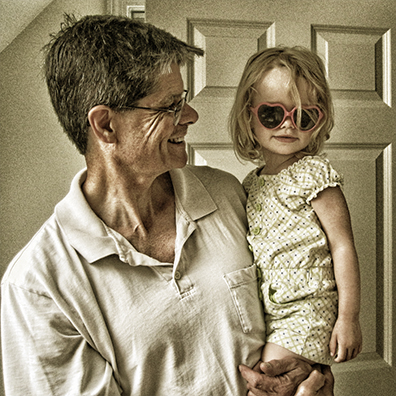Posting my review of the Boston Symphony Orchestra’s performances of Erich Korngold’s Die tote Stadt below. Please visit the Classical Voice NA site, and catch up on performances and music ideas. CVNA aggregates writers from across the continent, mostly sorta-retired journalists like myself. Give them a bump.
I was delighted to be in the room for Die tote Stadt, but it wasn’t the most successful semi-staging. Still, a vastly intriguing work.
From left, tenor David Butt Philip, tenor Neal Ferreira (in blue), and soprano Christine Goerke in Erich Korngold’s Die tote Stadt. Andris Nelsons conducts the Boston Symphony Orchestra, Jan. 30, 2025. Hilary Scott photograph
Imbedding a dream of love within a love story, and a comedy within a psychodrama, Erich Korngold’s 1920s opera Die tote Stadt mines the rich materials of post-Freudian thought, and the emotional fragility of early-century Europe.
The Boston Symphony Orchestra, in collaboration with the Boston Lyric Opera, presented two semi-staged performances of Korngold’s intricate score on Jan. 30 and Feb. 1. Andris Nelsons conducted. Soprano Christine Goerke sang the double role of Marietta/Marie, who becomes mysteriously entwined with the widower Paul, sung by tenor David Butt Philip.
A storm of psycho-tropes clouds the bizarre relationship: transference, festishism, dream therapy, the femme fatale, the virgin-whore, melancholia, stalking. The dense, deft score—a preview from the 20-something Korngold of his subsequent successes in Hollywood—often blasted from the stage. A large orchestra, three choruses, two prominent soloists and a half-dozen antic sidekicks made for loads of sonic competition.
Korngold paints a crafty picture of a widower Paul, with allusions to the devastated city of Bruges that mimic Paul’s stark emotions. Paul had carefully created a house shrine to his dead wife, and had seemed intent on not leaving. But as the action begins, Paul has seen a dancer in a commedia dell’arte troupe (which later performs its own Act 2 interlude), who reminds him precisely of his wife.
Marietta the dancer woos the thunderstruck Paul, then abruptly abuses him and his wife Marie’s memory. He in turn idolizes her, becoming an abject stalker/inamorata. The opera culminates in Paul strangling her with a braid of his wife’s hair, an obsessively preserved token.
Only after killing Marietta does Paul realize it’s all been a dream (the audience realizes it then, as well), claiming that experiencing the delusion has cleansed his fixation.
Semi-stagings have become a BSO staple during Nelsons’s ten years, and an audience favorite (opening night was sold). Nelsons and the orchestra have programmed multiple semi-staged Wagners, a Cosí, La Bohème—all compellingly performed.
The benefits of semi-staging: greater prominence given to the instruments, usually a plus. The drawbacks: instrumentalists who might be in the pit share the sonic space, overwhelming the voices.
Philip was a late substitution in the cast, bravely taking on the strenuous role of the obsessed widower. Philip had substituted for the BSO in Beethoven’s Ninth the previous week, and stayed to fill in for this role as well.
Philip has an adroit, lively instrument, and it’s little surprise that he is much in demand. But it was disappointing not to hear the role sung with confidence. Little fault of his own, Philip relied overly on the score and on Nelsons to keep up, at the expense of staying in character. This became particular troublesome during the exhausting duet that opened Act 3—the monumental argument that ends with Paul strangling Marietta.
Goerke herself, normally a force of robust creativity, had trouble being heard over the orchestra. Elliot Madore’s lyric bass (as another double, Frank/Fritz, Paul’s confidant, then part of Marietta’s troupe) struggled to be heard at times as well. But in his moment—the Act 2 interlude, singing “Mein Sehnen, mein Wähnen” (My longing, my dreaming, brings me back to the past), prefiguring the outcome of Paul’s grief therapy—Madore both articulated and lanced Paul’s fantasy in strong voice and spot-on character.
James Burton conducts the combined choruses of St. Paul's, Boston Lyric Opera, and Tanglewood Festival Chorus in the Mass. Ave corridor. Hilary Scott photograph
There were touching moments—the densely through-composed score has some memorable solos and duets. Paul and Marietta join in the searching Lute Song, “Glück, das mir verblieb” (Joy, sent from above), as they warily meet for the first time. Brigitta (mezzo Karen Cargill, another double role as a housekeeper/lay religious), the half-dozen players in the commedia troupe, and the three chamber choirs—Tanglewood Festival Chorus, Boston Lyric Opera chorus, and the well-regarded St. Paul’s Choir School boys—filled in with touching complementary scenes. Their appearances alluded to the origins of the libretto, George Rodenbach’s 1892 novel Bruges-la-morte, and deepened the comparisons between Paul and the dead city.
Die tote Stadt plays like Strauss, reads like Ibsen, and sounds more like Puccini than Schoenberg. Whatever the apt comparisons, it demands to be an organic unit: theatre, music, ideas, text. A semi-staged version gets at most of that, but not all of it.



